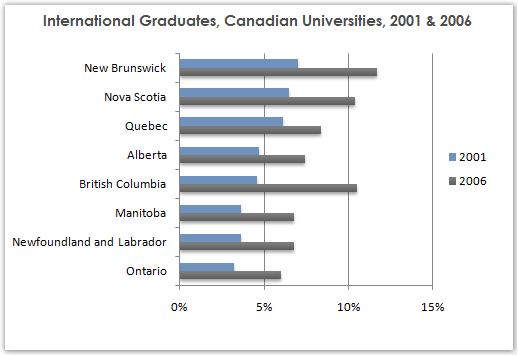» You should spend about 20 minutes on this task.
The chart below shows the percentage change in the share of international students among university graduates in different Canadian provinces between 2001 and 2006.Summarise the information by selecting and reporting the main features, and make comparisons where relevant.
» Write at least 150 words.

Sample Answer
The bar graph shows data for international students in eight different provinces of Canadian Universities between 2001 and 2006. As is presented in the graph, the percentage of international students among those provinces increased significantly.
According to the given data, New Brunswick had nearly 7% share of international students in 2001 which was the largest percentage. In this year, Nova Scotia and Quebec both had more than 5% share of international students. All other provinces listed in the graph had less than 5% share of those international students.
After 5 years in 2006, the percentages of international students in these provinces increased significantly and New Brunswick had the highest percentage of international students (about 12%) while Nova Scotia and British Columbia both had over 10% such students. The percentage of international students in all other provinces increased noticeably and these shares were between 6% – 8%.
In summary, more international students went to study in Canadian Universities in 2006 than 2001, and New Brunswick and British Columbia were the two most favourite provinces for them in 2006.
